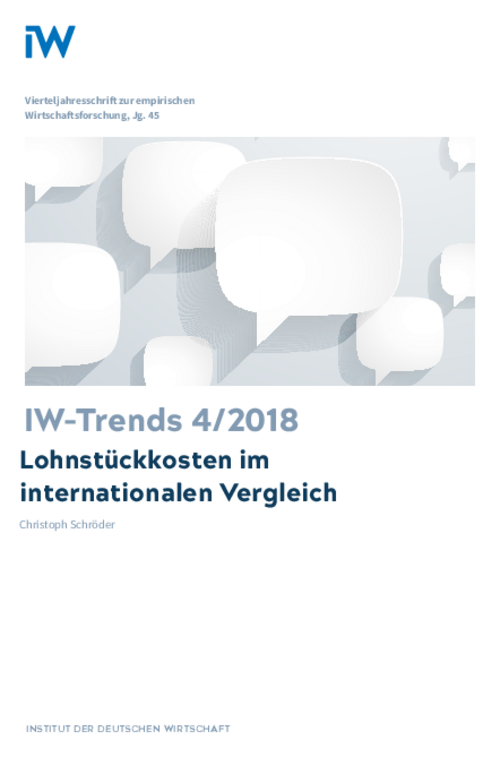In 2017, unit labour costs in Germany’s manufacturing industry remained high in comparison with the foreign competition. On average, unit labour costs in the comparator countries were 8 per cent below the German level.

An International Comparison of Unit Labour Costs

In 2017, unit labour costs in Germany’s manufacturing industry remained high in comparison with the foreign competition. On average, unit labour costs in the comparator countries were 8 per cent below the German level.
The cost advantage of the Eurozone compared to Germany amounted in 2017 to 3 per cent. Productivity in Germany is also above average, but not by enough to compensate for the disadvantage of high labour costs. Nor is Germany exceptional in how unit labour costs have developed. Since the introduction of the euro, the level of unit labour costs has improved by only 5 per cent compared with the rest of the world, despite the weakness of the German competitiveness at that time. With an improvement of just under 10 per cent between 1999 and 2017, Germany has outperformed the rest of the Eurozone. However, this is solely due to improvements occurring up to the pre-crisis year of 2007. Moreover, unit labour costs in three euro area countries have developed slightly to significantly more favourably than in Germany. And in France, which unlike Germany has not been criticised for its supposedly underperforming wage dynamics, unit wage costs in manufacturing developed only 3 per cent less favourably than in Germany during the observation period. After a period of high volatility, the position of German unit labour costs vis-à-vis the rest of the euro area has since 2013 remained almost constant and differed little from the long-term average. Since German surpluses in visible trade in relation to trade volume with the Eurozone are little larger than at the end of the 1990s and almost all euro countries now have current account surpluses, there is little empirical evidence of Germany being in a position of stifling competitive advantage.

An International Comparison of Unit Labour Costs

More on the topic

The 9th IW Survey of Further Training
In 2016 some 85 per cent of companies in Germany were active in continuing vocational training, using a broad mix of methods.
IW
Has the German Economy Reached its Limit?: Skilled Labour Shortages as a Brake on Growth
The German economy is performing significantly better than was expected in the first few months of this year. During the course of 2017, certain early fears – especially of a weakening of the global economy due to increasing protectionism – have proved ...
IW